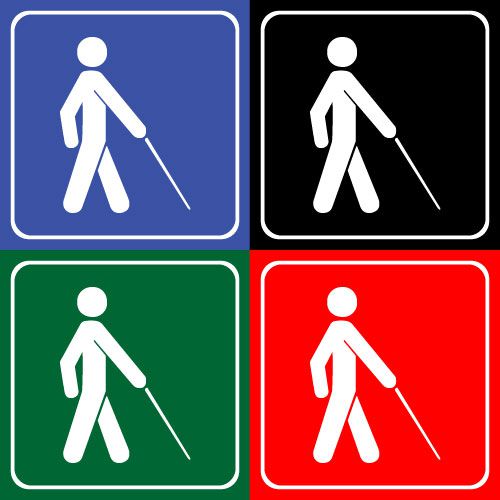
Inclusive design is a topic discussed more frequently every day, especially in the creative and tech industries. As digital consultants, it's our job is to provide a user with a digital experience, whether it be through a product or service. If we cannot grant equal access to all, we not only miss out on business (and face some sticky legal situations), but the user will also miss out on experiencing our carefully designed creations.
So much of what we do on a daily basis is increasingly digital‚ from relying on Google search, receiving speedy Amazon Prime deliveries, and even benefitting from just good ol' WiFi‚ and inclusive design has become an increasingly important challenge to overcome when it comes to customer experience. For brands and the digital firms they partner with, the main goal is to provide a service or product that is accessible to all, sans discrimination.
On the other hand, if a public website where a company operates business is not accessible to people with disabilities‚ whether it be auditory, visual, or physical ‚ it could cause some serious setbacks and repercussions. Did you know that a company can be sued for not providing an accessible website for people with disabilities?
In 2015, studies showed that more people in the US were using just their phones to access the internet than desktops. [reference] Last November, mobile and tablet internet usage exceeded desktop for the first time worldwide, and the trend is for internet usage to be increasingly away from the desktop. [reference]
In response, the ADA conversation is boldly moving towards mobile apps, which have been the talk of the future of accessibility. Slowly but surely, it will be illegal to launch an app that doesn't comply with the ADA's Accessible Design Standards. This means many of the apps that are out today will need to be revamped with accessibility in mind.
An accessibility overhaul is huge because it will change the experience of the internet for a large demographic of people. Another benefit of making your website accessible‚ Google search (SEO) rewards websites that have their structure optimized for ADA accessibility, which helps your website rank better than others in search engine results pages.
Here are 7 ways you can make sure your website is ADA compliant and still looking good:
1 / Create an easy-to-navigate website structure that lets the user know where they are at any given time.
A large number of disabled users will be using touch-assistive technologies that go through your website from left to right, top to down, similar to a book. This makes it very important to create all website functionality/interactivity available and accessible from a keyboard.
2 / HTML Tags for Applicable Elements
Page templates must include descriptive HTML tags that provide necessary, descriptive information for a user to have access to information.
Use detailed alt tags for images, graphics, videos, layout sections, etc. Incorporate a global search feature within each page for the user to find specific content. Alternative navigation is imperative for websites that incorporate a hover effect for submenus.
3 / Make smart color choices that make it easier for users to see content.
It's best not to rely on color to convey meaning when it comes to accessibility. Besides, most people with disabilities have preset font and color sizes within their web browsers ‚ this means your website should be designed to respond to user-customized settings.
4 / Empower Developers with Web Content Accessibility Guidelines (WCAG) 2.0.
Designate someone on your development team to become familiar with necessary accessibility features for a website to comply with WCAG 2.0. This will help ensure the accessibility of a website/app before launching and help prevent any liabilities or risks.
5 / Audio Descriptions and Captions
For videos, descriptive information should be included in either alt text form or visual captioning of a transcript for people who are hard of hearing and for the visually impaired.
6 / Alternative Document Presentation
Provide documents in alternative text-based format in addition to PDF, so that a user may preview the content of the document before interacting with it.
7 / QA
Have a focus group of people with disabilities test popular assistive technologies (Mac/iOS built-in, ZoomText, etc.) to QA your website or app.
Designing for accessibility can be tough because there are many types of disabilities to take into account, but everyone has a right to be served.
Good design is inclusive design.
For more information, check out Business.com's ADA Compliance article.
